Tobias Kallehauge
Prediction of Rare Channel Conditions using Bayesian Statistics and Extreme Value Theory
Jul 01, 2024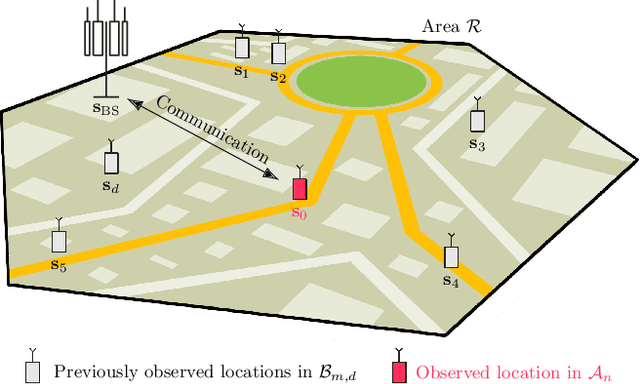
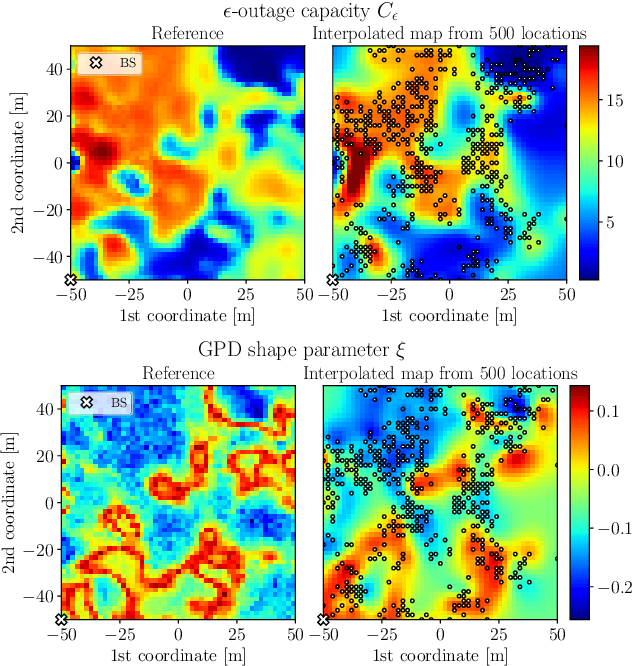
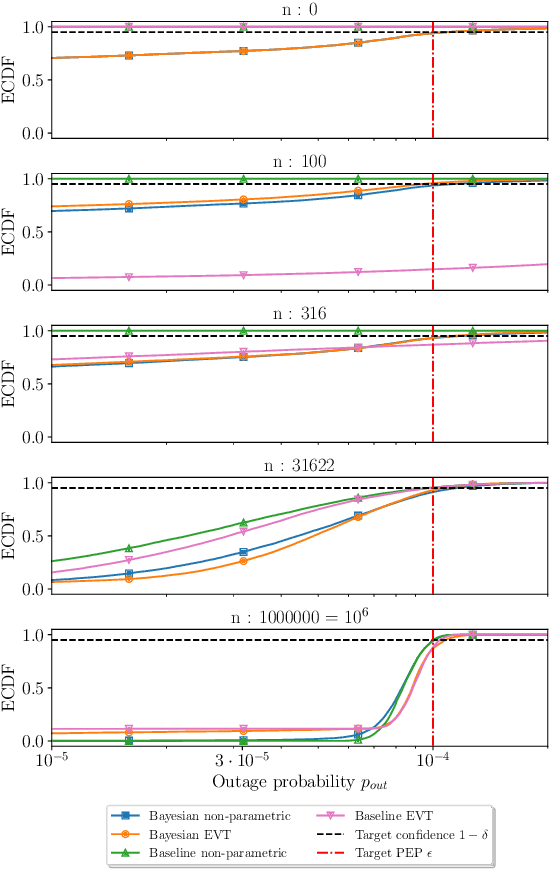
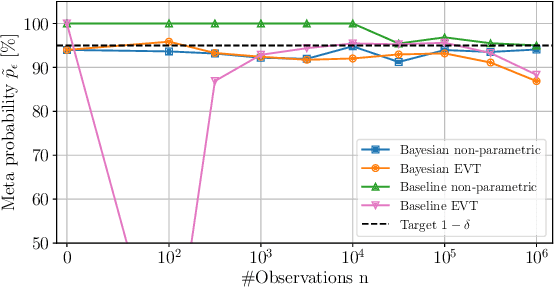
Abstract:Estimating the probability of rare channel conditions is a central challenge in ultra-reliable wireless communication, where random events, such as deep fades, can cause sudden variations in the channel quality. This paper proposes a sample-efficient framework for predicting the statistics of such events by utilizing spatial dependency between channel measurements acquired from various locations. The proposed framework combines radio maps with non-parametric models and extreme value theory (EVT) to estimate rare-event channel statistics under a Bayesian formulation. The framework can be applied to a wide range of problems in wireless communication and is exemplified by rate selection in ultra-reliable communications. Notably, besides simulated data, the proposed framework is also validated with experimental measurements. The results in both cases show that the Bayesian formulation provides significantly better results in terms of throughput compared to baselines that do not leverage measurements from surrounding locations. It is also observed that the models based on EVT are generally more accurate in predicting rare-event statistics than non-parametric models, especially when only a limited number of channel samples are available. Overall, the proposed methods can significantly reduce the number of measurements required to predict rare channel conditions and guarantee reliability.
Experimental Study of Spatial Statistics for Ultra-Reliable Communications
Feb 17, 2024



Abstract:This paper presents an experimental validation for prediction of rare fading events using channel distribution information (CDI) maps that predict channel statistics from measurements acquired at surrounding locations using spatial interpolation. Using experimental channel measurements from 127 locations, we demonstrate the use case of providing statistical guarantees for rate selection in ultra-reliable low-latency communication (URLLC) using CDI maps. By using only the user location and the estimated map, we are able to meet the desired outage probability with a probability between 93.6-95.6% targeting 95%. On the other hand, a model-based baseline scheme that assumes Rayleigh fading meets the target outage requirement with a probability of 77.2%. The results demonstrate the practical relevance of CDI maps for resource allocation in URLLC.
On the Statistical Relation of Ultra-Reliable Wireless and Location Estimation
Aug 28, 2023



Abstract:Location information is often used as a proxy to guarantee the performance of a wireless communication link. However, localization errors can result in a significant mismatch with the guarantees, particularly detrimental to users operating the ultra-reliable low-latency communication (URLLC) regime. This paper unveils the fundamental statistical relations between location estimation uncertainty and wireless link reliability, specifically in the context of rate selection for ultra-reliable communication. We start with a simple one-dimensional narrowband Rayleigh fading scenario and build towards a two-dimensional scenario in a rich scattering environment. The wireless link reliability is characterized by the meta-probability, the probability with respect to localization error of exceeding the outage capacity, and by removing other sources of errors in the system, we show that reliability is sensitive to localization errors. The $\epsilon$-outage coherence radius is defined and shown to provide valuable insight into the problem of location-based rate selection. However, it is generally challenging to guarantee reliability without accurate knowledge of the propagation environment. Finally, several rate-selection schemes are proposed, showcasing the problem's dynamics and revealing that properly accounting for the localization error is critical to ensure good performance in terms of reliability and achievable throughput.
Predictive Rate Selection for Ultra-Reliable Communication using Statistical Radio Maps
May 30, 2022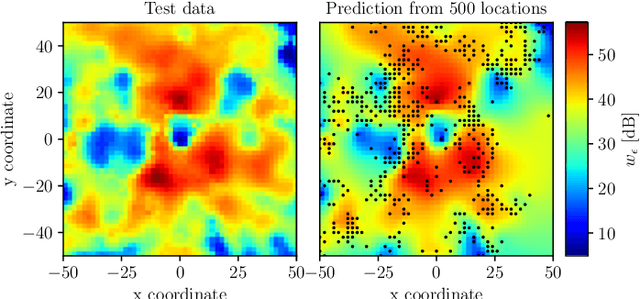
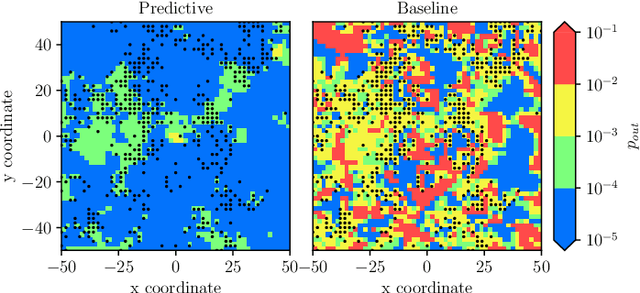
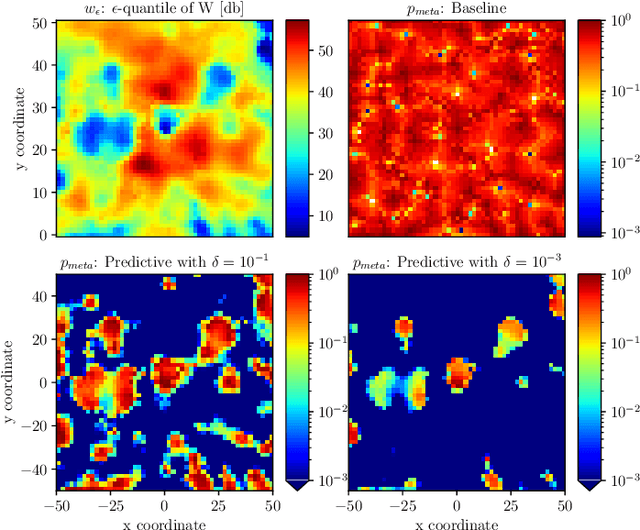
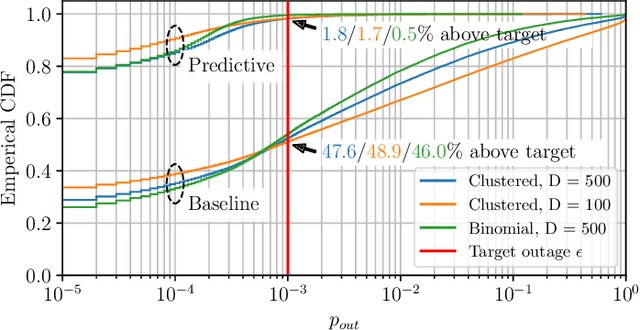
Abstract:This paper proposes exploiting the spatial correlation of wireless channel statistics beyond the conventional received signal strength maps by constructing statistical radio maps to predict any relevant channel statistics to assist communications. Specifically, from stored channel samples acquired by previous users in the network, we use Gaussian processes (GPs) to estimate quantiles of the channel distribution at a new position using a non-parametric model. This prior information is then used to select the transmission rate for some target level of reliability. The approach is tested with synthetic data, simulated from urban micro-cell environments, highlighting how the proposed solution helps to reduce the training estimation phase, which is especially attractive for the tight latency constraints inherent to ultra-reliable low-latency (URLLC) deployments.
A Primer on the Statistical Relation between Wireless Ultra-Reliability and Location Estimation
Oct 18, 2021



Abstract:This letter statistically characterizes the impact of location estimation uncertainty in the wireless communication reliability, in which location information is used as a proxy to choose the rate. First, a Cram\'er-Rao bound for the localization error is derived. Then, through a simplified setup, we show that the reliability - characterized by how likely the outage probability is to be above a target threshold - can be sensitive to location errors, especially when the channel statistics are also sensitive to the location. Finally, we highlight the difficulty of choosing a rate that both meets target reliability and accounts for the location uncertainty, and that the most direct solutions suffer from being too conservative.
 Add to Chrome
Add to Chrome Add to Firefox
Add to Firefox Add to Edge
Add to Edge